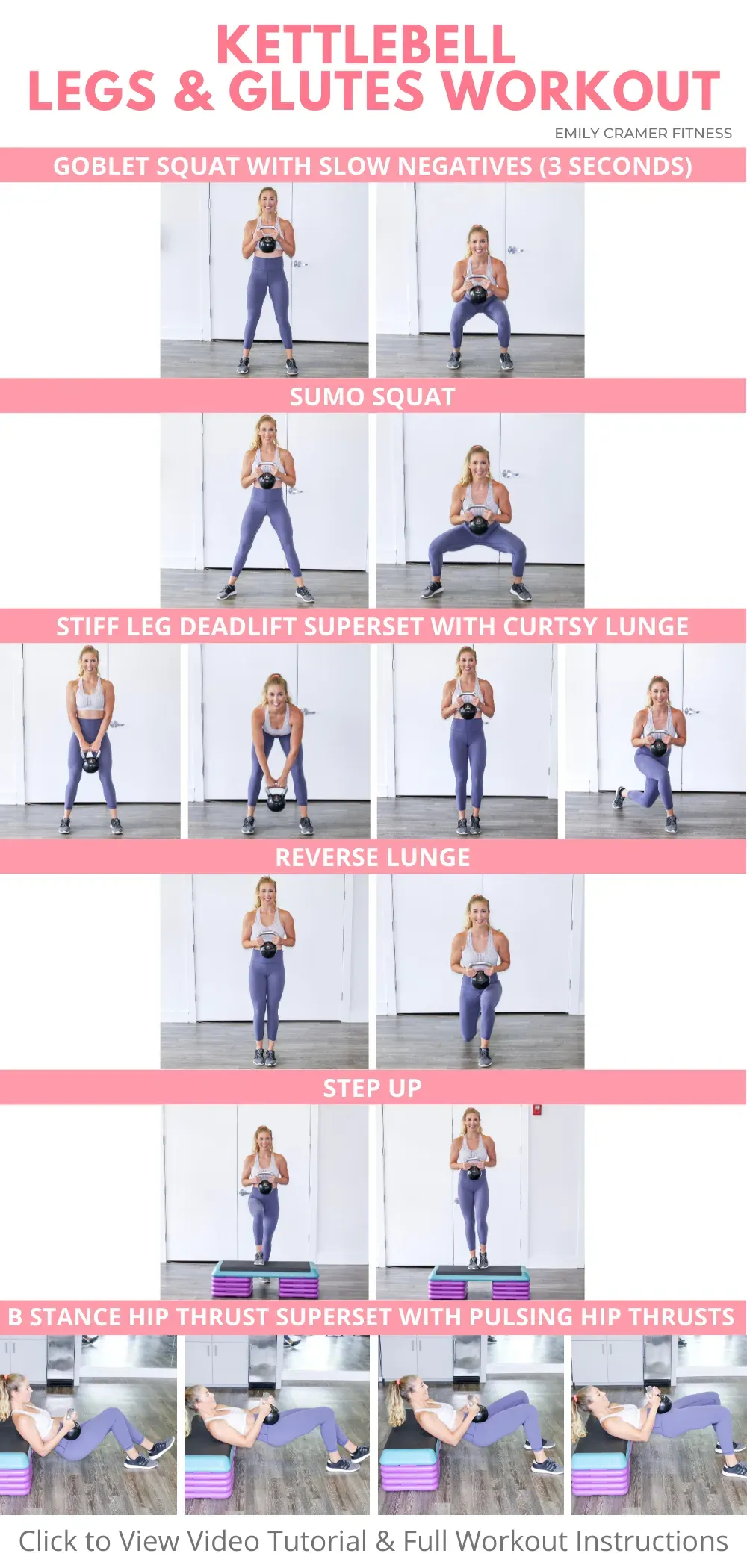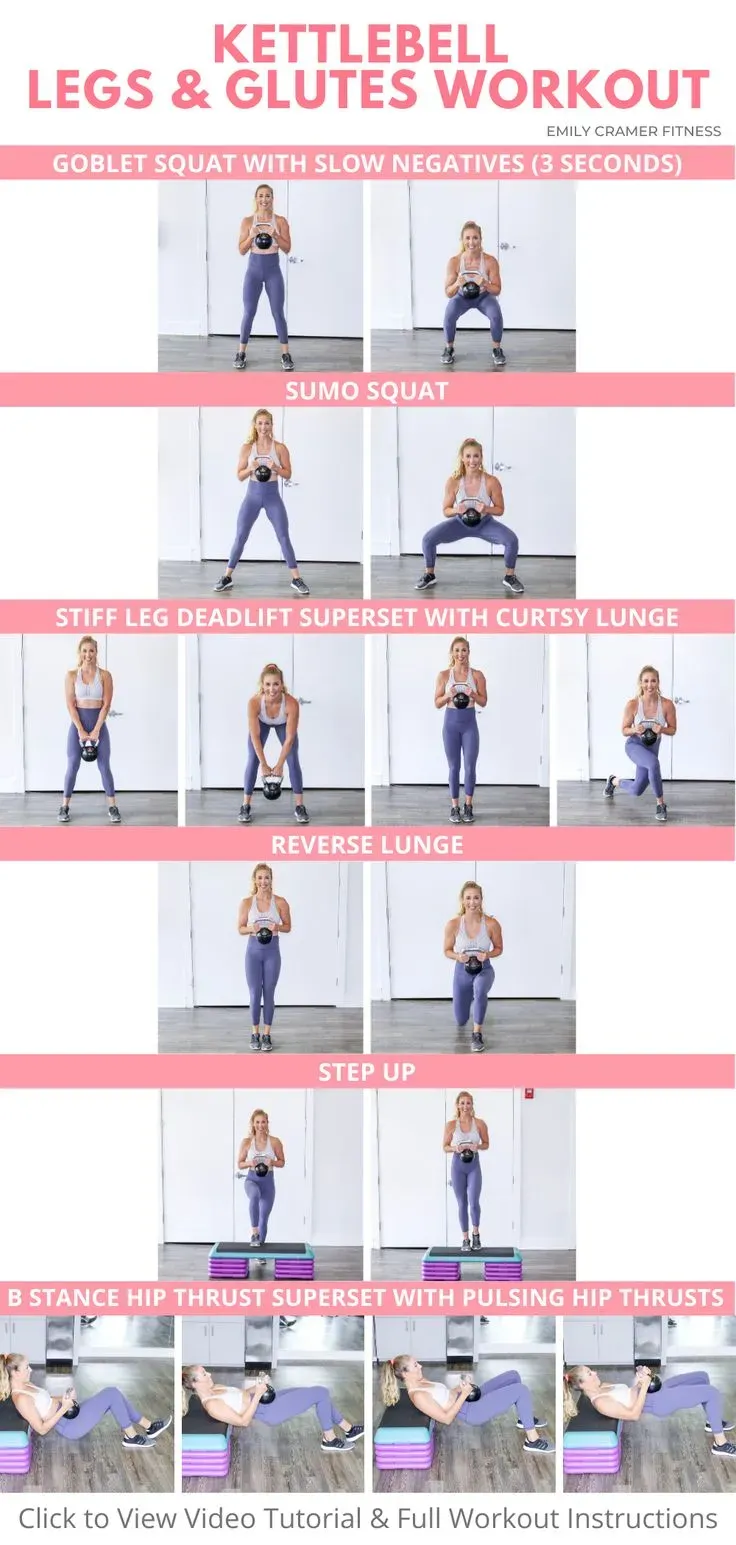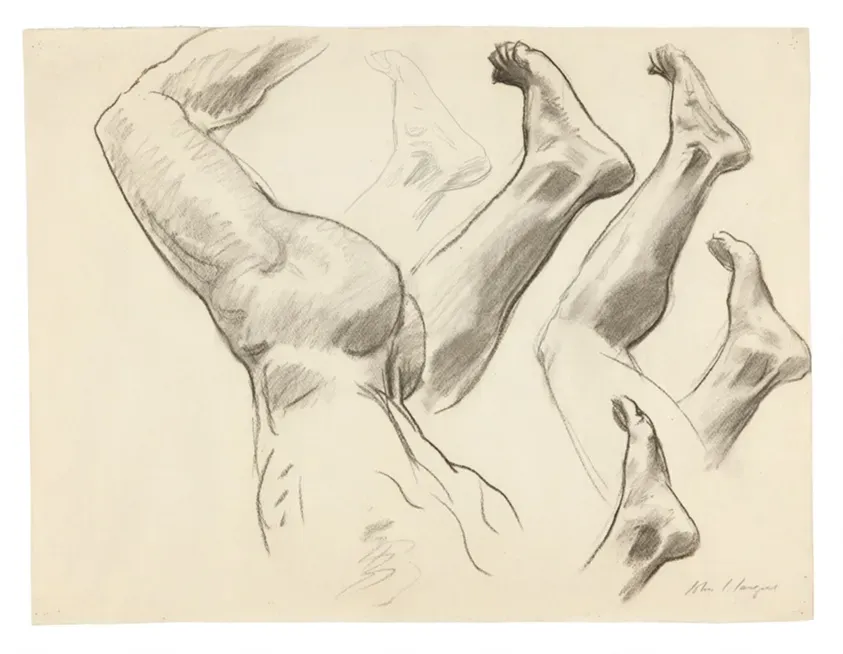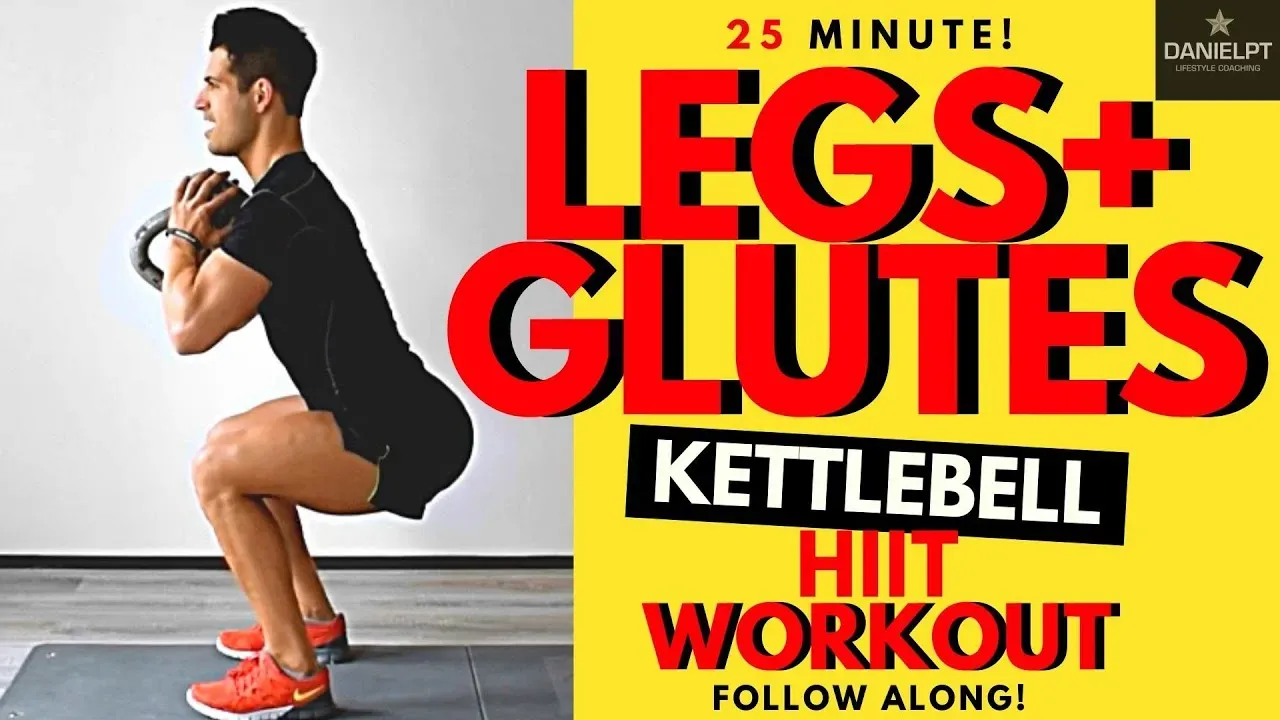Table of Contents
Let's talk about building a solid lower body. Forget complicated machines or needing a whole gym packed with weight plates. If you’ve got just one piece of equipment, a kettlebell might be your secret weapon for sculpting powerful legs and glutes. We often chase that feeling of strength and stability from the ground up, and the unique shape and weight distribution of a kettlebell make it incredibly effective for targeting those muscle groups.
Why Use a Kettlebell for Your Leg and Glute Workout?

Why Use a Kettlebell for Your Leg and Glute Workout?
Beyond the Dumbbell: Dynamic Movement and Stability
Look, dumbbells are fine. They sit there, you pick them up, you put them down. Simple. But a kettlebell? It’s a different beast entirely, especially when you're targeting your legs and glutes. The weight isn't centered in your hand; it hangs below it. This off-center load forces your stabilizing muscles to work overtime just to control the thing. Think about a kettlebell swing – it's not just up and down; it's a powerful hip hinge that demands core stability and explosive glute activation you just don't get from a standard squat with a barbell on your back.
This dynamic loading is crucial for building functional strength. Real life isn't always perfectly balanced. Lifting groceries, moving furniture, chasing a bus – they all involve awkward loads and require your body to stabilize against shifting weight. Training with a kettlebell for your leg and glute workout prepares you for that chaos, building resilience and power where it counts.
- Engages more stabilizing muscles than traditional weights.
- Promotes dynamic, explosive movements like swings and cleans.
- Improves grip strength alongside lower body power.
- Offers a compact footprint for home workouts.
Building Power, Not Just Bulk: The Kettlebell Advantage
If your goal is just to get huge quads that look good in shorts, sure, load up the leg press. But if you want lower body power that actually translates to athleticism – jumping higher, running faster, lifting heavier things off the ground – the kettlebell shines. Exercises like kettlebell deadlifts and goblet squats hit your posterior chain (glutes, hamstrings) and quads effectively, but the real magic happens with ballistic movements.
Swings, snatches, and cleans build explosive power from your hips, the engine of your lower body. This isn't just about muscle size; it's about how quickly and forcefully your muscles can contract. Integrating these into your leg and glute workout with kettlebell routine means you're not just building strength, you're building the ability to apply that strength rapidly. It feels different, looks different, and performs different. And honestly, a well-executed kettlebell swing just feels powerful.
Essential Kettlebell Exercises for Legs and Glutes

Essential Kettlebell Exercises for Legs and Glutes
The Goblet Squat: Your Foundation Builder
Alright, let's start simple but effective. The goblet squat is your absolute bread and butter when you're figuring out a leg and glute workout with kettlebell. Holding the kettlebell by the horns against your chest immediately forces you into a better upright posture. It helps keep your chest up and reminds your elbows to track inside your knees as you descend. This isn't just a leg exercise; it's a mobility check and a core workout rolled into one.
It’s fantastic for hitting your quads and getting deep into your glutes at the bottom. Plus, because you're holding the weight in front, it's a bit more forgiving on your lower back than a traditional back squat if you're still working on form. Think of it as the gateway drug to heavier kettlebell lifts. Master this, and you build the pattern needed for nearly everything else.
The Kettlebell Swing: The Powerhouse Hip Hinge
Now for the king of kettlebell movements: the swing. If your leg and glute workout with kettlebell doesn't include swings, you're missing out big time. This isn't a squat; it's a hip hinge. Imagine you're trying to slam a door shut with your butt. That's the power source. The kettlebell is just the object you're projecting forward with that explosive hip drive.
Swings build incredible power in your posterior chain – your glutes and hamstrings – which are often neglected in traditional gym routines. They also torch calories and build cardiovascular fitness. Getting the timing right is key: hike the bell back like you're snapping a football, then stand up explosively by extending your hips. Don't lift with your arms; they're just guides.
- Goblet Squat: Focus on depth and upright posture.
- Kettlebell Swing: Emphasize hip drive, not arm lift.
- Kettlebell Deadlift: Hinge from the hips, keep a flat back.
- Kettlebell Lunge: Maintain control, knee tracks over foot.
The Kettlebell Deadlift: Ground Up Strength
The deadlift, in any form, is a fundamental human movement – picking something heavy off the ground. The kettlebell deadlift is an excellent way to train this pattern safely and effectively, making it a staple in any serious leg and glute workout with kettlebell. Because the handle is elevated and the weight is between your feet, it often feels more natural than a barbell deadlift, especially for beginners or those with mobility issues.
It hammers your hamstrings, glutes, and lower back, building serious strength in the muscles responsible for pulling and lifting. The focus is on the hinge: push your hips back, keep your back flat, and drive through your heels to stand up. It’s less about how much weight you lift and more about perfecting the movement pattern. Get this right, and you protect your back while building a powerful backside.
Crafting Your Leg and Glute Workout with Kettlebell

Crafting Your Leg and Glute Workout with Kettlebell
Start with Your Goals: What Do You Want to Build?
so you’ve got your kettlebell, you know the basic moves like swings and goblet squats. Now, how do you actually put it all together into a legit leg and glute workout with kettlebell? First off, figure out what you're actually trying to achieve. Are you looking for pure strength? More power and explosiveness? Or maybe just better endurance and muscle tone?
Your goal dictates your exercise selection and how you structure the workout. If strength is the game, you’ll focus on heavier weights and lower reps (think 3-5 reps) on exercises like goblet squats and deadlifts. For power, you’ll lean into ballistic movements like swings and cleans with moderate weight for slightly higher reps (maybe 5-8 reps). Endurance or tone? Lighter weight, higher reps (10-15+) and maybe shorter rest periods.
Don't just randomly string exercises together. Think about which movements hit the muscles you want to target most. Swings are killer for glutes and hamstrings. Goblet squats hit quads and glutes. Lunges work one leg at a time, building stability and targeting glutes and quads. Mix and match based on your focus.
Structure Your Session: Sets, Reps, and Flow
Once you know your goal and have a few exercises in mind, it’s time to build the actual session. A solid leg and glute workout with kettlebell usually involves a warm-up (don't skip this, seriously), a few main strength or power movements, and maybe some accessory work or conditioning at the end. How many sets and reps? Again, depends on the goal.
For strength, you might do 3-5 sets of 3-5 reps of goblet squats, followed by 3-4 sets of 5-8 reps of deadlifts. Rest longer between sets (2-3 minutes) to recover. For power, maybe 4-5 sets of 8-12 swings, then 3 sets of 6-8 per leg of kettlebell lunges. Rest might be shorter (60-90 seconds).
Consider the flow of the workout. Should you do all sets of one exercise before moving on? Or try a circuit, moving from one exercise to the next with minimal rest? Circuits are great for conditioning and hitting more volume quickly, while traditional sets are better for focusing on heavy lifting and strength gains. Pick a structure that keeps you moving effectively and safely.
Goal | Exercise Examples | Sets & Reps (Guideline) | Rest Between Sets |
|---|---|---|---|
Strength | Goblet Squat, Deadlift | 3-5 sets of 3-5 reps | 2-3 minutes |
Power | Swing, Clean, Snatch | 4-5 sets of 8-12 reps | 60-90 seconds |
Endurance/Tone | Goblet Squat, Lunge, Swing | 3-4 sets of 10-15+ reps | 30-60 seconds |
Consistency and Progression: The Real Secrets
Building serious leg and glute strength with a kettlebell isn't about one killer workout; it's about showing up consistently. Two to three lower body sessions a week is a good starting point for most people. Give your muscles time to recover and grow between workouts.
And you have to progress. If you're doing the same weight for the same reps week after week, you'll plateau. How do you progress with a kettlebell? You can't just add a tiny plate. You either need a heavier kettlebell (the obvious but sometimes costly option), or you can increase the number of reps or sets, decrease rest time, improve your form (making the same weight harder), or try more challenging variations of the exercises. Maybe single-leg variations or incorporating more complex movements like cleans or snatches.
Listen to your body, but also push yourself a little bit each week. That's where the magic happens. It’s not always glamorous, but consistent effort with smart progression is how you actually get stronger and build the lower body you're after with that simple piece of iron.
Common Mistakes to Avoid in Your Kettlebell Routine

Common Mistakes to Avoid in Your Kettlebell Routine
Swinging with Your Arms, Not Your Hips
you see someone doing a kettlebell swing, and it looks simple, right? Just hoist that thing up. Big mistake number one, especially in a leg and glute workout with kettlebell: treating the swing like a front raise with a heavy object. The power, the *real* work, comes from a sharp, powerful hinge at your hips, driving through your glutes and hamstrings. Your arms are just ropes holding onto the bell, guiding its path. If you’re lifting it primarily with your shoulders and arms, you're missing the point entirely and probably heading for a sore back or shoulders, not stronger legs and glutes.
Think of it like this: The kettlebell is the whip, and your hips are the crack. The energy starts low and explodes upwards. If your bell floats up slowly or your back rounds, you're doing it wrong. Get a coach, watch some reputable videos, or even film yourself. This single movement is a game-changer for lower body power, but only if you respect the hinge.
Ignoring Mobility and Rushing Progression
Another trap people fall into when starting a leg and glute workout with kettlebell is thinking it's all about the weight. They grab a bell that's too heavy, or they try to jump into complex moves like cleans or snatches before they've mastered the basics like goblet squats or deadlifts with good form. Kettlebells expose mobility limitations quickly. Can you get into a deep, stable goblet squat? Can you hinge properly for a deadlift without rounding your back?
Trying to lift heavy or do advanced moves with poor mobility or rushed form is a fast track to injury. It’s far better to use a lighter bell and move well, focusing on the mind-muscle connection and perfecting the movement pattern. Once your form is solid and the weight feels easy for the target reps, *then* consider going heavier. Progression should feel earned, not forced. Your joints and future self will thank you.
Ask yourself:
- Can I perform a bodyweight squat with good depth and posture?
- Do I understand the difference between a squat and a hip hinge?
- Does my lower back feel strained during kettlebell exercises?
- Am I consistently adding weight or reps without sacrificing form?
Your Kettlebell Leg & Glute Power Play
Look, building strong legs and glutes isn't rocket science, but it does require smart choices. The kettlebell, with its unique design, offers a no-nonsense way to challenge these muscles effectively. We've covered why it works, broken down the moves, and shown you how to piece it together. Stick with it, pay attention to form, and you'll likely see results – maybe not overnight, but they'll come. It's about consistent effort and making a simple tool work hard for you. So grab that kettlebell, put in the reps, and feel the difference from the ground up.